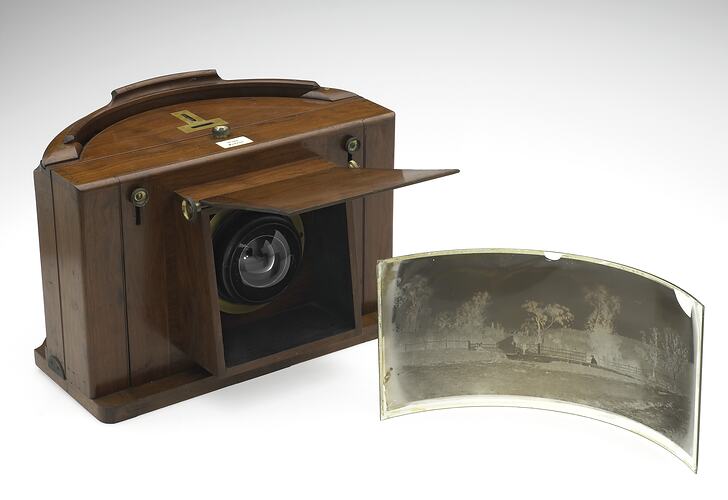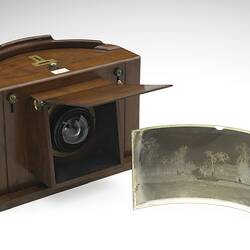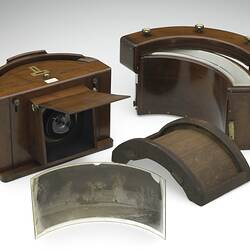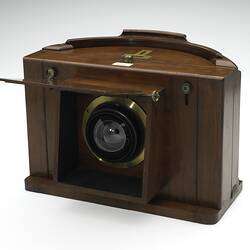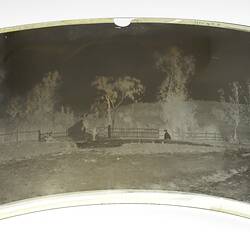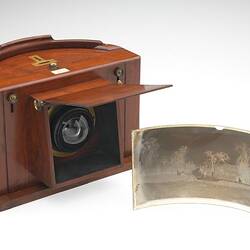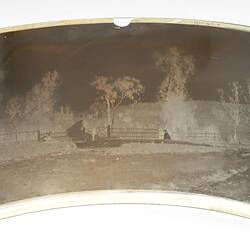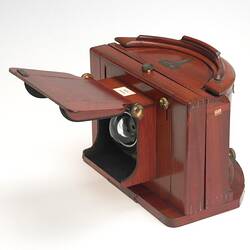Summary
Sutton panoramic camera with 76 mm lens protected by a hinged wooden flap. This camera was used by Richard Daintree in Victorian Land Survey of 1864.
The lens was designed by Thomas Sutton (1819-75) of St. Brelade, Island of Jersey, in 1859. The camera consists of a curved wooden back, designed to take curved glass wet-plate negatives. The large curved plate coupled with the wide angled lens, produced panoramic photographs. Sutton's achromatic panoramic lens fitted to this camera was the earliest panoramic wide-angle lens ever produced and patented by Sutton on the 28th September, 1859 (patent no. 2193). It consists of a globular sheet of flint glass filled with filtered distilled water when in use, and divided into two equal compartments by a brass diaphragm. The angle of field is 140 degrees. Includes curved vessel for sensitising the plate, curved printing frame and a curved wooden plate holder. The camera was manufactured by Thomas Ross, London, U.K. around 1861.
The blank plate was dipped in emulsion in the sensitising tank and the photograph was taken while the plate was still wet. The museum also holds 12 curved glass negatives taken by Richard Daintree, a pioneer of Australian fieldwork photography, using this camera.
Physical Description
Wooden viewing box containing a glass lens. Box has a curved back and wooden hinged flap at front. Wooden exposure frame also curved as is the wooden sensitising tank with a white custom fit ceramic infill. The glass plate negatives are also curved.
More Information
-
Collecting Areas
-
Acquisition Information
Donation from Victoria: Crown Lands & Survey Department, 1977
-
Inventor
-
Manufacturer
-
Used By
-
Classification
-
Category
-
Discipline
-
Type of item
-
Overall Dimensions
31 mm (Length), 35 mm (Width), 28 mm (Depth), 31 mm (Height)
-
Keywords
Camera Accessories, Camera Components, Camera Lenses, Cameras, Negatives
